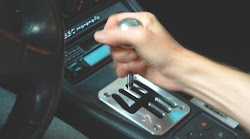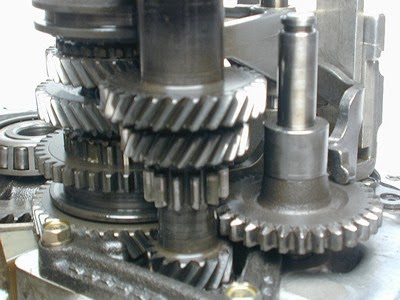Tuesday 7 May 2013
WHAT IS POWER SHIFTING?
Power shifting (also known as; full-throttle shifting, flat-shifting, or speed shifting)is a method of shifting used with manual transmissions to reduce the time where the driving wheels are not powered. Unlike a normal gearchange, in a powershift the driver does not let off the accelerator.
The clutch is briefly depressed while the shift lever is rapidly shifted into a higher gear, keeping the engine in its power band. This helps the car accelerate faster, but increases the wear on the clutch and the transmission beyond normal levels and shortens the expected life of these components. Flat-shifting may also increase fuel consumption. In most cases, there is a method of cutting the ignition and/or fuel delivery, in a similar fashion to a rev-limiter, which prevents the engine from over-revving when the load from the transmission is removed. The technique lends itself especially well to sequential transmissions as found on most motorcycles and some race cars.
WHY DOES MANUAL TRANSMISSION CAR MAKE A LOUD WHIRRING NOISE IN REVERSE?
WHY DOES MANUAL TRANSMISSION CAR MAKE A LOUD WHIRRING NOISE IN REVERSE?
Manual transmissions use mostly helical gears, but reverse is a special situation that requires a different type of gear - a spur gear.
The gears that make up the forward gear ratios are all helical gears. The teeth on helical gears are cut at an angle to the face of the gear. When two teeth on a helical gear system engage, the contact starts at one end of the tooth and gradually spreads as the gears rotate, until the two teeth are in full engagement. This gradual engagement makes helical gears operate much more smoothly and quietly than spur gears. Also, because of the angle of the gear teeth, more teeth are in engagement at any one time. This spreads the load out more and reduces stresses.
The only problem with helical gears is that it is hard to slide them in and out of engagement with each other. On a manual transmission the forward gears stay engaged with each other at all times, and collars that are controlled by the shift stick lock different gears to the output shaft (see How Manual Transmissions Work for details). The reverse gear on your manual transmission uses an idler gear (the large spur gear visible at the right side of the picture below), which has to slide into mesh with two other spur gears at the same time in order to reverse the direction of rotation.
Spur gears, which have straight teeth, slide into engagement much more easily than helical gears, so the three gears used for reverse are spur gears>
Each time a gear tooth engages on a spur gear, the teeth collide instead of gently sliding into contact as they do on helical gears. This impact makes a lot of noise and also increases the stresses on the gear teeth. When you hear a loud, whirring noise from your car in reverse, what you are hearing is the sound of the spur gear teeth clacking against one another!
HOW THE POWER(rack and pinion) STEERING WORKS?
The components of the power steering consist of:
• Power steering pump
•Power steering fluid
•Speed sensor
•Steering rack
•Steering wheel
The POWER STEERING PUMP It is a rotary pump driven by a belt from the main pulley of the engine at roughly twice engine speed. This pump is designed to circulate POWER STEERING FLUID through the SPEED SENSOR and at very high pressure from the pump to the STEERING RACK. STEERING WHEEL movements cause pressurized fluid to be directed one way or the other inside the steering rack.
The steering rack is under the vehicle between the front wheels. The power steering fluid is directed under pressure to the rack. The steering wheel provides input from the driver to the rack, directing power assist when necessary.
Power steering fluid is designed to withstand about 1200 lbs of pressure without breaking down or foaming. Hondas use a special fluid that is a type of whale oil. Do not attempt to use any other type of fluid, as it will foam under pressure and destroy the seals in the rack assembly causing loss of fluid resulting in loss of power assisted steering.
The speed sensor is attached to the transmission and senses vehicle speed. The power steering system is designed to provide maximum assist when the vehicle is traveling slowly. As speed increases, assist pressure decreases. So that at 35 MPH the power steering is providing no assist. The power resumes with reduction of speed.
On vehicles with four wheel steering, the front rack assembly provides power assist to the rear wheels.
A new type of power steering is now available on the Civic hybrid. This steering is based on electricity, not fluid. This means that the power steering is available, even if the engine is not running, such as when the auto off feature is in effect. The electrical power steering has several benefits: Less power from the engine to operate, more precise steering, power steering is available at all times, not to mention less weight.
...and that's the way the power steering works!! :)























